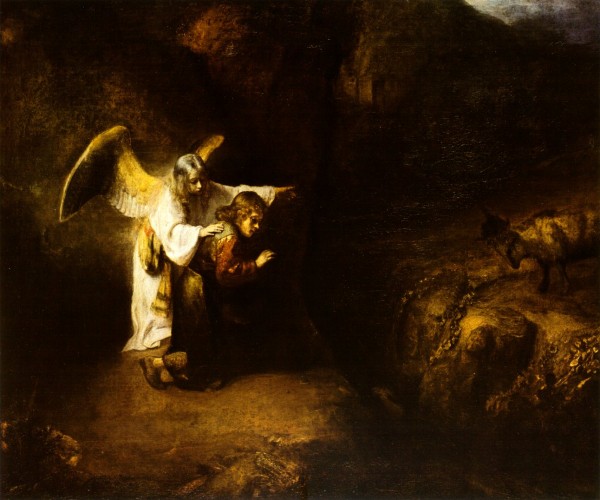Boston Camerata provides enchanting new take on “The Play of Daniel”
In 1958, Noah Greenberg and New York Pro Musica produced The Play of Daniel and, in the process, sparked the early music movement to life. Since then, the liturgical drama, a masterpiece of medieval music, has taken on a life of its own through multiple performances and scholarly editions.
Last year, Boston area audiences were given the chance to hear Gotham Early Music Scene’s re-imagining of the work as part of the Rockport Chamber Music Festival. Local groups like the Boston Camerata are no strangers to Daniel either. In 1983, then director Joel Cohen presented his own version, which offered a tasteful departure from a strict medievalist approach.
Now the Boston Camerata is back with a new production, titled Daniel: A Masterpiece Revisited. Reconstructed and produced by current director Anne Azéma, Boston Camerata’s performance of the drama, heard Friday night at Boston’s Trinity Church, is a pure delight and an enchanting take on a familiar story.
The Play of Daniel was composed in the year 1200 by a redactor and his students for New Year’s Day festivities at the cathedral in the northern France town of Beauvais. Its concentrated drama tells of the Old Testament prophet Daniel, a Jew in exile whose visions signal the end of a Babylonian king and whose faith delivers him from the lion’s den.
Manuscript sources for Daniel leave much room for the imagination. Its stage directions are scant and the score preserves only the text and melodic pitches. Azéma’s version, based on her own meticulous transcriptions of the music from a facsimile of the original sources, is a purists’ take in one sense—a welcome departure from Gotham Early Music Scene’s use of modern instrumental colors—as it relies solely on the vocal lines to deliver the majority of the dramatic content.
But her edition is wonderfully unstuffy with the music sounding as fresh to the ear as any well-crafted new piece. The lines of chant flow together in one smooth tapestry and, dramatically, work to splendid effect. When the mystical writing appears on the wall in the palace of King Belshazzar, the men of the chorus chanted lines that moved independently of one other for an apt confusion of sound as well as sight.
The chorus added weight to Daniel’s prophesies by propping up his flowing melody with sturdy open fifths. Elsewhere, the music is catching, even toe-tapping in its use of rhythm. The vocal lines were accompanied with vigorous phrases by vielle and harp, played with precision by Shira Kammen, and the jingle and romp of tambourine and side drum, supplied by Karim Nagi. Some of the musicians’ most effective performances took place in the opening scene of Belshazzar’s palace, where they accompanied the frantic gyrations of dancer Indrany Datta-Barua. It was a true party. Daniel was intended for New Year’s celebrations, after all.
But what ultimately sold this production of The Play of Daniel was its operatic staging, a marked difference from the well-worn stained-glass approach to such medieval works.
Props, of course, were simple, with a chair for the kings’ throne and sticks for King Darius’ marching Persians. Costumes were also simple yet effective with everyone dressed in black shirts and pants, save for a few splashed of color for Belshazzar’s fez, the Queen’s rosy dress, and Daniel’s priestly robe. The production, though, made effective use of the church’s lighting, the altar place aglow with reds and yellows.
One couldn’t have asked for a more effective Daniel than Jordan Weatherston Pitts. Clad in a green jacket that resembled a military uniform, the tenor cast a strong presence as the prophet. His singing was sublime, his tone imposing when deciphering the message on the wall for King Belshazzar. His prayer in the lion’s den sounded with heartfelt sadness. At drama’s end, the singer, draped in a red cloak, was fittingly Christ-like as he sang his quaking melismas with mesmerizing focus to proclaim the coming of the Messiah.
Supporting him was a cast of solid singer-actors. Tenor Jason McStoots was aptly regal as Belshazzar, singing his lines with smooth efficiency. Joel Frederiksen brought his rich bass voice to the imposing role of King Darius, the Persian who deposes Belshazzar. Soprano Thea Lobo, as the Angel who looks out for Daniel while he is in the lion’s den, sang with velvety voice. Donald Wilkinson, adding a touch of humor to the drama by carrying a Swiss tote bag, cast a fatherly presence in the brief role of Habakkuk.
Azéma, as the narrator, sang with clarity to explain the drama in free-flowing English verse. The chorus, made up of members of Boston Camerata, students from the Longy Conservatory Early Music Program, the Trinity Choristers, and Boston City Singers, sang with tender phrasing and impeccable intonation.
Preceding the drama Friday night were performances of select Gregorian chants as well as songs drawn from the same manuscript as The Play of Daniel.
The Beauvais tunes were particularly beautiful in their melodic fluency. Of those, Juvenes et virgines sounded silky with its lovely winding line. The arching melismas of Et honore virginali seemed to spin around themselves in place. For the stirring Virgo gemma virginum, a small chorus of female singers stood in a closed circle with Azéma supplying accompaniment on the hurdy gurdy, the phrases floating into the church’s dome high above. In all, the chorus sang with pure tone and crystalline diction.
The Play of Daniel will be repeated 3 p.m. Sunday at Trinity Church. bostoncamerata.com
Posted in Performances




